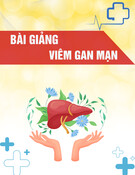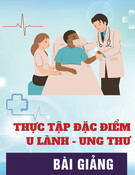
www.tapchiyhcd.vn
236
► CHUYÊN ĐỀ LAO ◄
INSTITUTE OF COMMUNITY HEALTH
GERIATRIC ASSESSMENT IN ELDERLY PATIENTS WITH HEART FAILURE WITH
REDUCED EJECTION FRACTION AT THE CARDIOLOGY DEPARTMENT
Le Quoc Hung*, Nguyen Thuy Dung, Nguyen Thi Phuong Dung, Nguyen Van Be Hai
Thong Nhat Hospital - 1 Ly Thuong Kiet, Ward 14, Tan Binh Dist, Ho Chi Minh City, Vietnam
Received: 04/09/2024
Revised: 10/09/2024; Accepted: 14/10/2024
ABSTRACT
Objectives: According to world statistics, heart failure is one of the five leading causes of
death, second after coronary artery disease and stroke. In parallel with the aging population,
the proportion of elderly people with heart failure is increasing. Elderly heart failure patients
have a worse prognosis than the younger with high rates of mortality and hospitalization.
Comprehensive assessment of the elderly has been shown to improve both mortality and
prolong life, especially in heart failure..
Methods: A cross - sectional descriptive study on elderly patients diagnosed with stable heart
failure with reduced ejection fraction at the Cardiology Department – Thong Nhat Hospital
from November 2023 to May 2024.
Results: The study was conducted on 44 elderly patients with an average age of 72.20 ± 8.8
years, male ratio was 59.1%. 100% polymorbidity patients, 100% patients with polypharmacy,
31.8% of patients reduced Basic Activities of Daily Living and 63.6% reduced Instrumental
Activities of Daily Living. 61.3% of patients were frailty, 47.7% patients with declined in
cognitive functions, 43.2% of patients had depressive disorder and 29.5% were malnourished.
Conclusion: Comprehensive geriatric assessment helps early identification and comprehensive
treatment in elderly patients, especially in heart failure patients who have a high rate of geriatric
diseases.
Keywords: Comprehensive geriatric evaluation, heart failure with reduced ejection fraction.
*Corresponding author
Email: bslequochung@gmail.com Phone: (+84) 906803924 Https://doi.org/10.52163/yhc.v65iCD10.1625
Vietnam Journal of Community Medicine, Vol. 65, Special Issue 10, 236-242








































